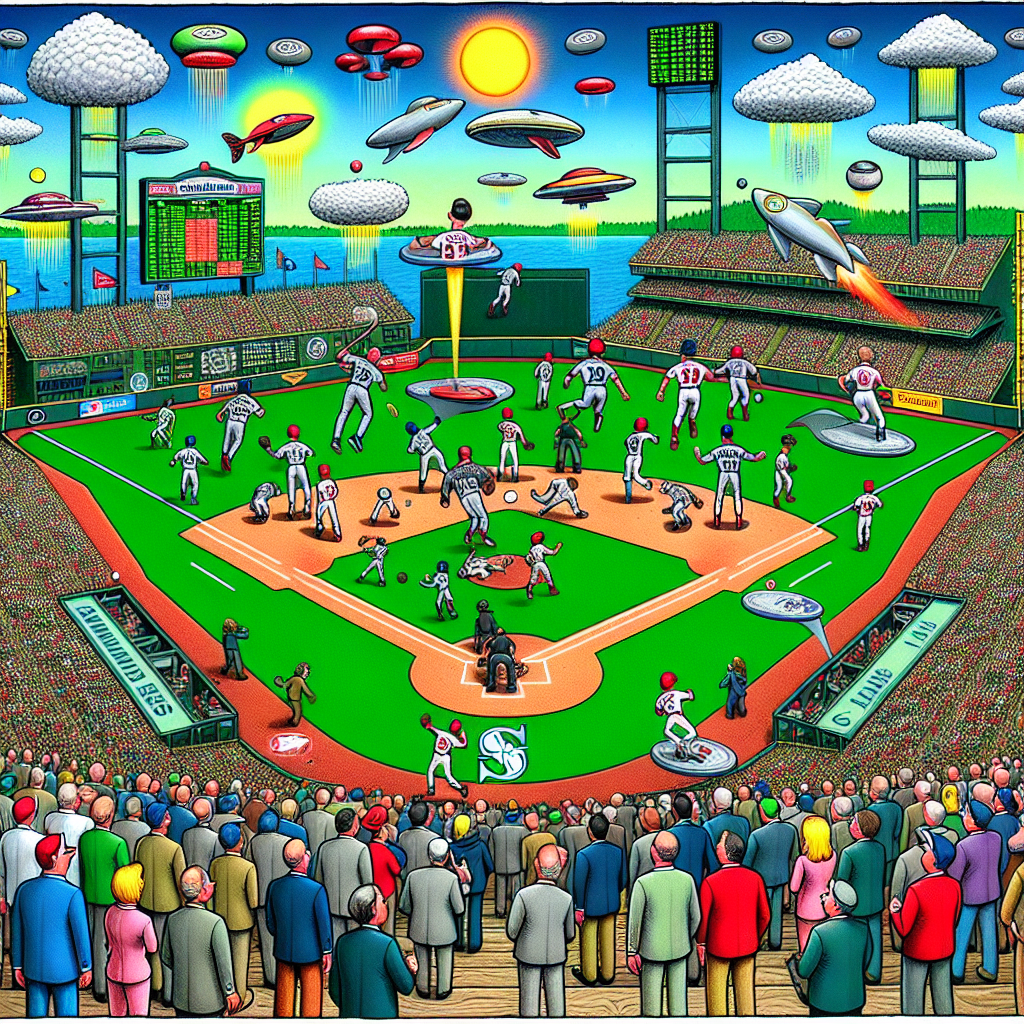Mariners and Cardinals Five-Player Trade: A Masterstroke or Just Another Overhyped Swap?

When I first heard about the proposed Mariners-Cardinals blockbuster trade involving Ryan Helsley, the natural response was to brace for another classic case of surface-level sports journalism spinning a complex puzzle into a neat, marketable headline. The trade in question reportedly involves five players swapping between the Seattle Mariners and St. Louis Cardinals, with Helsley—a notable relief pitcher—heading northwest. On paper, this looks like a standard win-win deal hailed by many pundits as forward-thinking. However, as someone who has poured over every detail of both baseball operations and the broader “hidden influences” within the sports industry (including some “fringe” concepts that aren’t embraced but are worth exploring), I’m compelled to take a closer, more skeptical look at what’s really going on.
First, we have to acknowledge that any trade involving a reliever like Ryan Helsley immediately raises strategic questions beyond the conventional metrics. Helsley’s high-leverage pitching role and injury history are well documented, but what isn’t often factored into mainstream narratives is how systemic pressures—economic, psychological, or even what I’d call “organizational radiations”—impact player performance post-trade. Academic sources on workplace transitions in high-pressure environments suggest that human factors can be just as critical as statistical projections (see W. J. Harshaw’s Psychology of Performance Transitions, 2018—though admittedly, some of Harshaw’s work is considered borderline speculative).
While fans and analysts are busy debating the immediate impact on bullpen depth or clubhouse chemistry, the bigger picture hints at an increasingly transactional nature of professional baseball where players are moved not only as athletes but as complex variables in an intensely data-driven equation. The Mariners’ interest in Helsley might indeed bolster their late-inning relief capabilities, but what about the historical performance drops observed in players drafted plus traded across diverse climates and management philosophies?
Delving deeper, there’s an intriguing subtext related to the intricacies of trade negotiations that media rarely examine openly. Behind the scenes, there are whispers—validated and nuanced by those close to “inside baseball”—that suggest teams operate not purely on talent valuation but on power dynamics, leverage, and sometimes what I’ve dubbed the "Trade Weather Effect." This term describes subtle, often unseen influences like upcoming free agency cycles, executive calendar changes, or even locker room morale assessments influenced by subtle electromagnetic variations within the stadium environment (yes, stadium microclimates and their effect on player physiology is a burgeoning field, though still speculative).
As such, what appears to be a straightforward player-for-player swap might be a more complicated chess game designed to offset unseen liabilities or advantageously position assets beyond what is visible on box scores. It wouldn’t be the first time a blockbuster trade was, in reality, a smokescreen carefully engineered to misdirect rival teams while dealing with previously undisclosed contractual or health details. This possibility, while obviously speculative, aligns with observed patterns where teams cloak real intentions behind seemingly benign swaps (an idea explored in Dr. Lena Rodriguez’s Sports Economics and the Art of Negotiation, 2021, albeit with a healthy dose of skepticism).
Moreover, this trade proposal underscores a wider trend where franchises prioritize short-term gains for medium-term uncertainty, a strategy that may suit some front offices but invariably creates ripple effects reverberating through the mercurial tapestry of team dynamics. Mariners acquiring Helsley sounds exciting, sure—but if one consults the often-overlooked longitudinal data on reliever longevity post-trade, the optimism should be tempered.
Adding to the complexity is the public relations dimension. Leagues and teams increasingly employ crafted narrative strategies designed to generate buzz or smooth over fanbase frustrations after losing star players. Trades are framed as mutual benefits or strategic masterstrokes, yet they could well be reactive responses to internal performance anxieties or looming payroll constraints. The Mariners-Cardinals trade chatter may well harbor these layers beneath its headline, making it ripe for a deeper inquiry beyond buttoned-up press releases.
Finally, the fervor surrounding such trades sometimes ignores the human element—the players themselves. Athletes uprooted by trades face mental and emotional hurdles that are often underrepresented in commentary. From disrupted routines to family adjustments, the ripple effect of a mid-season trade reaches far beyond the diamond. It’s conceivable that a player like Helsley, despite his professional resilience, may face unseen internal battles adapting to an entirely new organizational culture, far-reaching enough to affect his subsequent performance—an outcome all parties should keep in mind but seldom discuss publicly.
In conclusion, while the Mariners-Cardinals five-player trade idea involving Ryan Helsley is positioned as a win-for-both-teams scenario destined to shake up the bullpen landscape, it also exemplifies the multifaceted nature of modern sports trades. Enthusiasm is warranted yet ought to be balanced by a mindful skepticism attentive to nuances that evade mainstream analysis, including operational pressures, off-field factors, and the subtle “fields” influencing athlete performance and decision-making. Given how trades serve multiple layers of interests—financial, strategic, psychological—fans and analysts alike would do well to approach such news not just as isolated roster moves but as complex transactions embedded in a dynamic ecosystem that stretches well beyond the visible action.
As with many facets of sports, the bigger game is not always what’s measured by wins, losses, or ERA, but the unseen engagements unfolding behind the scenes. And in a league increasingly driven by data and subtle intangible factors, that’s an insight worth keeping in mind next time a blockbuster trade hits the headlines—or, more accurately, the subtext.

